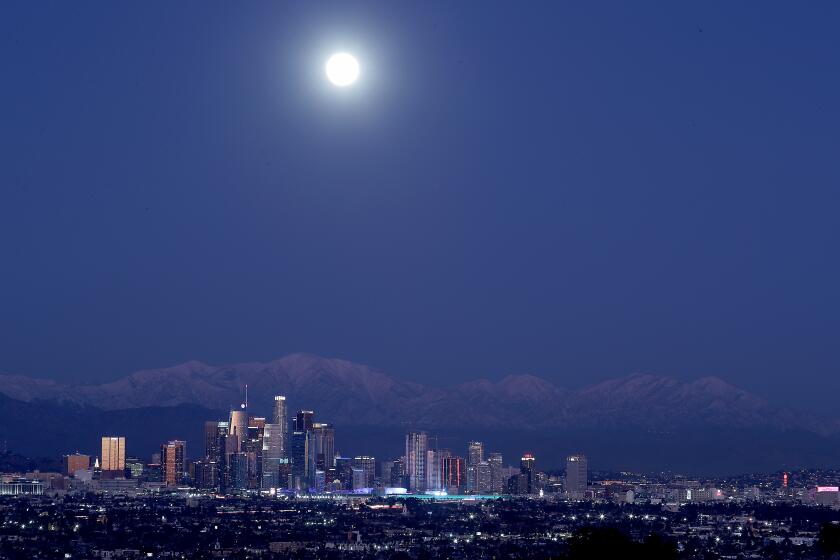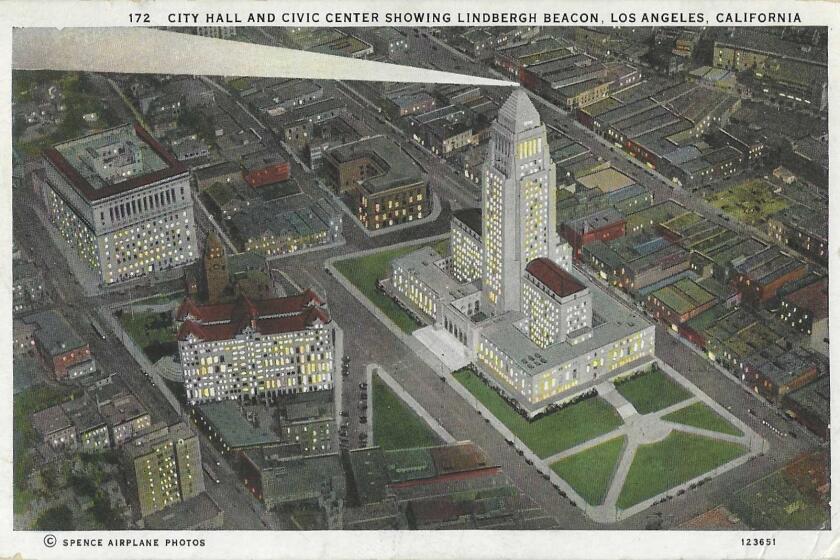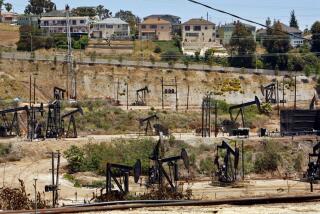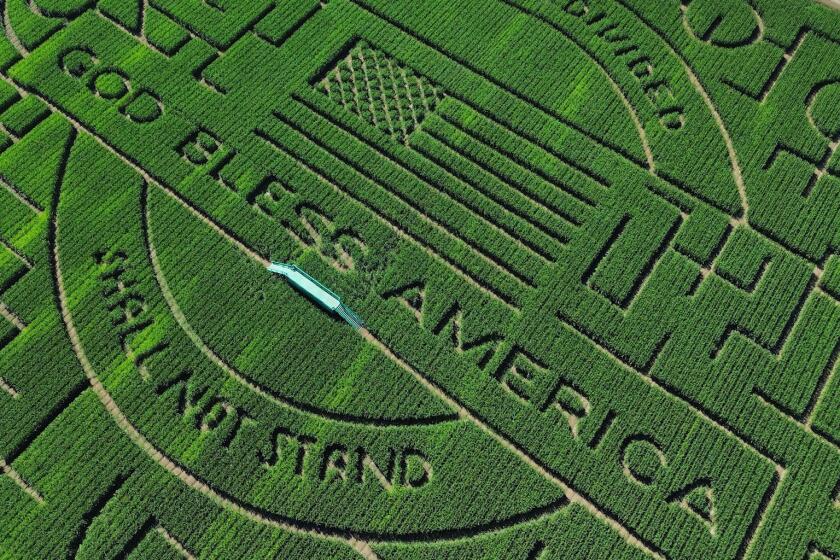Why there are oil wells all over Southern California
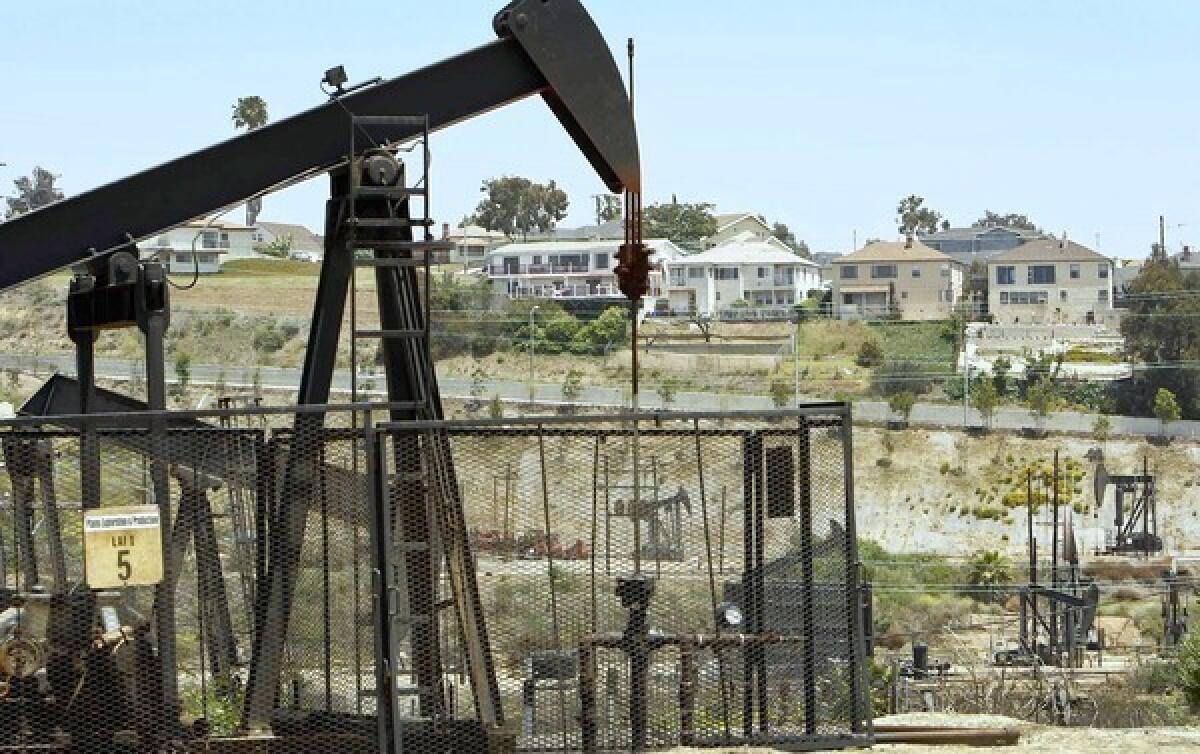
Why are there oil pumpjacks laboring away along the La Cienega shortcut through Baldwin Hills to LAX?
Why, until 2017, was an oil derrick pumping vigorously on the grounds of Beverly Hills High School, concealed in a flower-painted tower?
Would Manhattan allow an oil rig right outside Grand Central Station? Would Paris permit a derrick to go bob-bobbing along behind the Eiffel Tower?
Well, how many barrels a day are we talking about?
Like sunshine, oil, too, is nature’s gift to Los Angeles.
Hollywood is more dazzling, aerospace more thrilling, but it’s oil — noisome, filthy crude oil – that for more than 120 years has helped to make Los Angeles an unlikely petro-capital, and to make Angelenos rich. By 1926, when crabby Baltimore journalist H. L. Mencken complained that L.A. “stank of orange blossoms,” it also stank of oil.
Explaining L.A. With Patt Morrison
Los Angeles is a complex place. In this weekly feature, Patt Morrison is explaining how it works, its history and its culture.
At the La Brea tarpits (whose Anglo-Spanish name, translated literally, means “the the tar tar pits”), oil showed its icky, sticky face tens of thousands of years ago, a black quicksand deathtrap where the Chumash cannily and carefully harvested tar to caulk their tomol, plank canoes.
When the Spanish arrived in the summer of 1769, they came across the bubbling, noxious tar swamps. Father Juan Crespi, who was chronicling the expedition, wrote that his party christened them “the tar volcanoes.”
In time, tar deposits were quarried for asphalt, rather like peat bogs. Up in Newhall, Gen. Andres Pico, brother of the last governor of Mexican California, distilled oil seeping from his land into kerosene for his lamps.
The first real oil well was drilled during the Civil War, but industrial demand just wasn’t there for it to catch on. Finally, on Nov. 4, 1892, a down-on-his-luck newcomer named Edward L. Doheny sharpened a eucalyptus log like a No. 2 pencil and went chonking away at the Echo Park earth and struck oil. The black gold rush was on. (The Doheny story too went on — on to riches, to murder and to disgrace, but that’s a column for another time.)
Among the millions who came to Southern California dreaming of backyard orange trees, thousands put in home oil rigs instead, as far east as Figueroa, as far west as the waters off Venice Beach. It was as if “The Beverly Hillbillies” had brought their Texas tea with them.
Signal Hill, which flows with oil to this day, had so many derricks that a Depression-era WPA guide to Los Angeles said it resembled “an aroused porcupine.” And recently, a USGS study suggested that the killer 1933 Long Beach quake may have been caused by deep drilling down the coast in Huntington Beach.
Naturally, this tempting bonanza made for schemes and scams. The most brazen was the Julian oil scandal, a stock-manipulation Ponzi scheme that fleeced tens of thousands of Angelenos out of more than $100 million. One accused crook was shot dead in court by a man who had lost his life savings. Los Angeles’ district attorney went to San Quentin for taking bribes. And C.C. Julian himself sold up and left town, tried to pull another fast one in Oklahoma, skipped bail and ran off to Shanghai, where he poisoned himself.
To this day, there they remain, planted in parking lots and business districts and neighborhoods, disguised as stylish towers or nondescript office buildings, or with all their dipping-duck unsightliness right out there, still milking maybe 100 million barrels a year out of the ground, generating what it’s always been about — money and jobs.
And orphan wells, the ghosts of the boomtown, still pock underfoot Los Angeles, some open, some capped, some played out. The furls of pollution from abandoned wells alone put toxics into neighborhoods now crowded with houses, parks, schools. They confound public health regulations. Cities and environmental justice groups trying to put an end to oil operations run right into, well, a tarpit of grandfathered permits, aggressive oil companies, and arcane petro-chemical regulations. California was still issuing fracking permits last year. The city of L.A. has hoped to create buffer zones around oil operations; if you can’t take the pollution away from the people, at least try to keep the people away from the pollution.
L.A. is a place like no other. You’ve got questions. Patt Morrison probably has answers and can definitely find out.
If all this has got you thinking about sticking an auger into your yard and hoping for a gusher, it might not even be yours. Deeds and mineral rights are such a patchwork that sometimes you own only what’s as far down as the iceplant roots, and sometimes the mineral rights even stayed with some previous owner.
So that’s why you see them, those oil rigs on the shortcut through the hills to the airport. The Inglewood oil field is the biggest urban oilfield in the country, 97 years old and likely to reach 100 and then some.
As for drilling for oil in Paris — that was the premise of a 1943 play called “The Madwoman of Chaillot.” Katharine Hepburn stars as the lady trying to foil the oil.
Spoiler: Paris, 1; oil schemers, 0.
Los Angeles is a big, complicated place. Patt Morrison explaining how it works, its history and its culture in Explaining L.A. on latimes.com.
More to Read
Sign up for Essential California
The most important California stories and recommendations in your inbox every morning.
You may occasionally receive promotional content from the Los Angeles Times.

